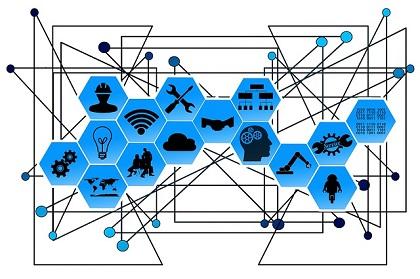Manufacturing equipment requires maintenance; efficient machines to get a manufacturing job done.
With the arrival of the Industrial Internet of Things (IIoT), modern sensors are able to observe every nook and cranny of a manufacturing plant. Traditionally, the responsibility of improving efficiencies and maintaining the operations in manufacturing was down to the technicians and engineers attached to the plant. Increasingly, however, they are being replaced by PdM (predictive maintenance) and IIoT.
Previously, manufacturing relied on preventative maintenance: technicians would ensure that everything was well oiled and working as it should, until, of course, a fault was detected and maintenance was required. This school of thought is now giving way to predictive maintenance - where faults can be predicted before they cause the equipment to hiccough, allowing for preemptive corrections. In essence, predictive maintenance enables plants to forecast the failing of a piece of equipment and it therefore reduces down-time.
 Souce: Pixabay
Souce: Pixabay
But is predictive maintenance the be-all and end-all? Technicians and engineers need to be on call at these plants in case they observe — or even smell — something that can bring manufacturing processes to a halt. Or do they?
Vice President of Product Strategy at RRAMAC Connected Systems, Tom Craven, believes that the worker, familiar with all of the kinks, rattles and smells of a manufacturing plant can be replaced by predictive maintenance software. He told Design News that a common rattle can now be diagnosed by the software and sensors:
“That rattle that the knowledge worker hears has other symptoms that can be picked up by a vibration sensor. The predictive maintenance system is a combination of sensors and machine learning. The knowledge worker is responding to his five senses and he has the experience to know what to do to correct the problem. The machine learning feeds the system data that knows what to do to correct the equipment.”
The main benefit for companies using predictive maintenance is reduced downtime. Additionally, however, remotely-located devices can be used to diagnose and even solve problems that come up. The result: more efficient and cost-effective processes. In the past, engineers would have to visit remote plants to diagnose and fix machinery problems – an expensive exercise.
Data collection, pre-processing, early fault detection, fault detection, time to failure prediction, maintenance scheduling and resource optimization are all of the things a company can look forward to when they utilize predictive maintenance. There is a more immediate situational awareness of how components are faring during manufacturing operations with predictive maintenance. Craven concludes:
“The machine learning is artificial intelligence applied to a machine. What happens over time is you record data, which includes multiple vibration points, motor current and temperature. You look for anomalies. In some cases it is obvious - motor current issues are easy to associate with a failure. Where data analysis become more complex, is when an anomalous vibration may be normal. Vibrations may vary during the cycles of the machine. What happens in these cases is you look at multiple variables and run a mathematical calculation that can flag the anomaly.”
Whilst artificial intelligence may still need some fleshing out and perfecting, predictive maintenance, assisted by AI software, is already saving companies money and time and increasing productivity. The future is predictive maintenance assisted by the connected sensors of the Industrial Internet of Things.
Works Cited
Spiegel, Rob. “Predictive Maintenance Is Replacing the Plant's Retiring Knowledge Worker.” Design News, 1 Mar. 2018, www.designnews.com/automation-motion-control/predictive-maintenance-replacing-plant-s-retiring-knowledge-worker/186322103658317.
Ulbert, Sebastian. “The Difference Between Predictive Maintenance and Preventive Maintenance.” Field Service Management Software, www.coresystems.net/blog/the-difference-between-predictive-maintenance-and-preventive-maintenance.
